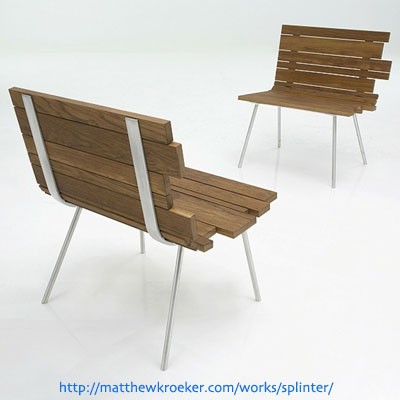1st Floor
142-144 Oxford Road, Temple Cowley, Oxford OX4 2EA
UK
Workshop series postponed until later in 2020/2021 - join our 3-hour online Zoom meeting (2 May)
We will find a new sequence of dates for this series of 5 CPD days, with everybody who enrolled for it. In the meantime, I am offering a Zoom Meeting instead on Saturday, 2 May between 10.00 and 13.00.
Please use the booking form to enrol for the Zoom meeting - the session is free, but we invite donations/contributions.
Solutions to the 2-chair technique's recurring pitfalls
Anticipating and understanding the obstacles and problems inherent in the technique and making therapeutic and transformational use of them
 When it comes to shifting the focus of therapeutic interaction from 'talking about' to 'exploring the experience', there are few techniques more useful than 'empty-chair' or 'two-chair' work (this applies to supervision as well as therapy).
When it comes to shifting the focus of therapeutic interaction from 'talking about' to 'exploring the experience', there are few techniques more useful than 'empty-chair' or 'two-chair' work (this applies to supervision as well as therapy).
However, when therapists risk using the technique, it often does not produce the intended or intuited results. Having started with what seemed like a burning, vibrant issue, the spark gets lost, and the interaction ‘goes flat’ or starts going round in circles.
"From many years of using the technique myself, as well as teaching and supervising it, I have concluded there are some built-in recurring pitfalls which are inherent in it. When we understand why these obstacles and pitfalls are necessarily bound to occur, we can anticipate and prepare for them and address them as they arise. This can actually enhance our use of the technique and make it more elegant and effective."
"I am expecting that in terms of the micro-detail of therapeutic technique (what you actually do and say as a therapist and how and in what sequence and with what timing), these days will be amongst the most specific and useful you will ever do. In terms of this particular technique, it's as close to a 'recipe book' or ‘manual’ of therapeutic intervention as is feasible when what we are really interested in is the aliveness and spontaneity of the client-therapist interaction."
This unique series of 5 CPD days with Michael Soth, starting with an in-depth weekend workshop (2 & 3 May 2020), followed by three further days, is designed to engender both detailed knowledge and skill as well as confidence and authority, whatever level of experience you are currently bringing to this type of work. The follow-on days are spaced out in such a way that participants can apply their learning in practice during the weeks in between, and then bring their experience back for deeper reflection and further learning.
The 'empty-chair' technique or 'two-chair work' is one of the best-known and widely-used humanistic methods. The technique invites/allows the client to embody the felt reality of particular relationship difficulties they feel caught in and bring them to life (rather than ‘talking about’ them), by spatially - and therefore emotionally - separating out the protagonists of otherwise diffuse internal conversations and ruminations. This can take the shape of psychodrama or role-play of the dialogue with actual others, or it can simply be an externalising and enacting of internal, fantasised or dreamt dynamics.
One of the advantages of the technique is that it can be applied fluidly to both external and internal relationships, often helping the client not only to see, but to feel the parallels and connections between internal and external ways of relating which are at the root of what perpetuates unsatisfying, polarised or destructive relationships.
Undoubtedly, the technique has many therapeutic uses and benefits, and can facilitate powerful, transformative experiences. But when therapists attempt to use it, they frequently report in supervision that it did not work, that it 'went flat', or that the client self-consciously refused to 'perform'.
How can we anticipate and deal with these recurring obstacles?
Rather than setting ourselves (and the client) up for the pressure of the technique having to produce a 'good' outcome, let's understand the inherent principles of the technique and how the dialogue is actually bound to 'go flat'. Based on that understanding, we can then pay attention to how it does go flat when it does and make that awareness useful for the particular dialogue we have set up in the first place. This kind of stance takes care of the usual ‘self-consciousness’ or 'performance anxiety' associated with the use of the technique (for both client and therapist), and helps therapists maintain the exploratory intention inherent in the approach.
Although the technique arises from within a Gestalt paradigm and fits and belongs with the principles of that holistic approach and its underlying field theory, it has been taken up and is being used by a wide variety of other therapeutic schools, often without practitioners even knowing about its origins in Gestalt. But in order to address the inherent pitfalls and difficulties of the technique, the perspectives and paradigms of other approaches are very useful, especially body-oriented and psychoanalytic perspectives, but also, for example, NLP and CBT. Because I bring this broad-spectrum perspective to the technique, the workshop should be suitable for practitioners from across the modalities and orientations.
For more detailed information about the background, format and content of the weekend workshop, download the leaflet. Download the booking form.
An edited transcript of an interview with Michael, addressing key points of the forthcoming CPD workshops on two-chair work; same interview as an mp3 audio file.
